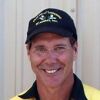We want to let PoliceOne Members know that P1 Firearms Columnist Ron Avery will be holding an advanced seminar for police firearms instructors that will examine the principles involved in analyzing shooter performance and strategies to enhance performance. Held at the Alameda County (Calif.) Sheriff’s Office Range on August 21-23, 2009, this event is presented in partnership with the SIG SAUER Academy and the Practical Shooting Academy. Download a registration form from www.PracticalShootingAcademy.com or contact the Practical Shooting Academy Training Coordinator via phone at (970) 323-6111. Please be advised that you must be a certified law enforcement firearms instructor and a full time member of your agency to attend.
Failure to qualify or generally poor shooting performance leads to an enormous waste of time, money and resources for an agency that could be better used elsewhere. Failure to diagnose problems correctly, improper remediation strategies, incorrect advice or marginal drills only compound the problem.
Factor in instructor and shooter frustration and qualification courses that never evolve because the lowest common denominator can’t rise any higher and you have a formula for stagnation and burnout.
The Skills Hierarchy
It matters what order in which you teach things. In order to understand the problems, it is helpful to understand the process of mastery from a physical as well as a mental perspective.
Control
The first level of the skills hierarchy is control, both physical and mental. On the physical side, learning how to truly connect the gun to the hand so that it doesn’t slip as well as using balance and a properly adjusted center of gravity to stabilize against the force of recoil is absolutely essential to shooting well. On the mental side, learning how to “do nothing” when the gun discharges is among the greatest challenges that all shooters face.
Relaxation
The next level in the hierarchy is relaxation and isolation of tension, both in the body and in the mind. Tension is like a coiled spring, waiting to be released. It will manifest itself in your shooting in some way, shape or form. Only by learning to minimize tension does one gain higher levels of skill. Relaxation also serves as the bridge between the next two areas of skill; precision and speed.
“Economy of Effort” lies at the heart of mastery. Economy of motion is a subset of this fundamental law of shooting. Economy of effort leads to economy of motion. The saying “smooth is fast” is a reflection of this law. However, there are thousands of applications of “economy of effort” that lead to mastery.
Precision
Precision is more than just how accurately you shoot. It applies to the application of effort, the precision of the movements and the timing of the efforts used to put a bullet on target.
Speed
Speed erodes precision. Learning to relax — both physically and mentally — during high speed shooting situations is one of the prerequisites to keeping your precision at speed. Speed must be in balance with the other aspects of the skills hierarchy: control, relaxation, and precision.
When looking at remediation strategies, one must understand what level of the skills hierarchy you must work from to be successful in the long term.
When you see someone yanking the trigger, most instructors go to work on teaching trigger control (precision). I recommend that you start at the level of control.
This person does not understand what true control really is all about. They cannot relax and “let recoil happen” and mental tension builds as they near the point of breaking the shot. This mental tension builds in the mind and, like a coiled spring, releases at the point of the trigger being pulled. While being present at all distances, it usually shows up in more precise shooting efforts at 15 and 25 yards.
In the short term, you may be able to get a person to pull the trigger with less tension and get them to qualify. However, you have not addressed the fundamental problem of how to control the gun and the mindset that will lead to a feeling of being in control and being able to relax behind the gun.
Here is where a thorough understanding of the principles involved in controlling the gun will pay big dividends.
Next time: Elements of shooting and the shooting cycle


